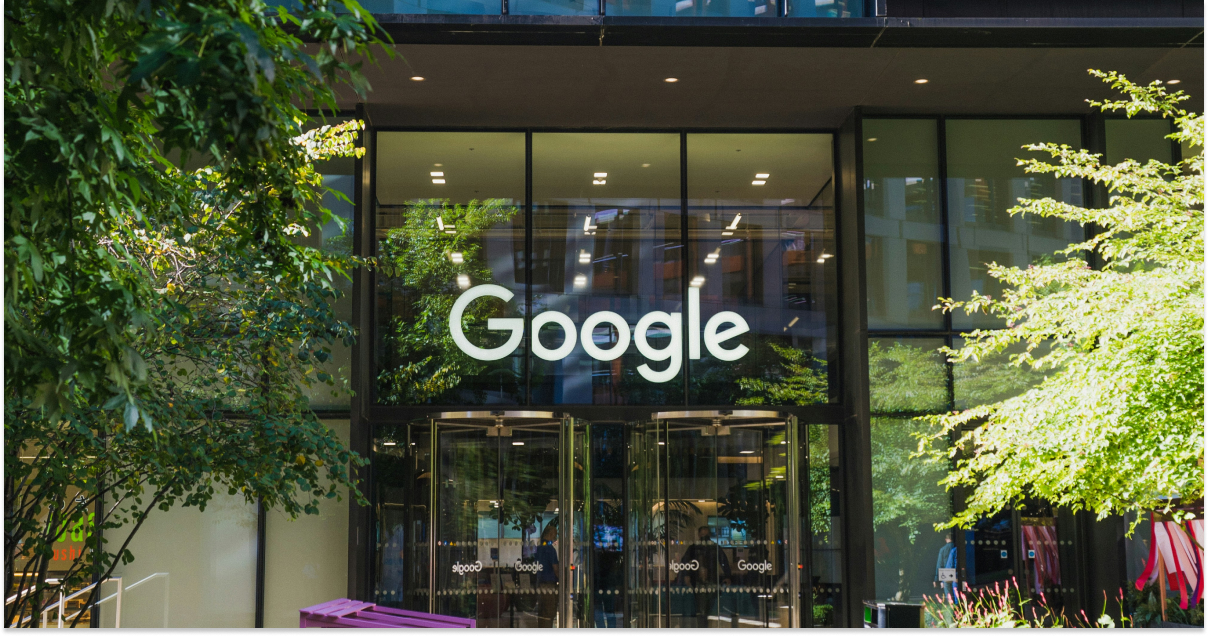As a beacon of innovation and ground-breaking ideas, Google’s approach to remote and hybrid work schedules has been closely watched and widely discussed by the HR communities and leaders. This pivot is more than a mere adjustment of work modalities; it’s a reflection of a broader shift in corporate culture, highlighting a perfect blend of traditional in-office work and the freedom of remote operations.
About Google:
Google is a global technology leader, primarily known for its search engine which has become an integral part of internet usage.
Known for its innovation, Google is changing how its employees work. It’s finding a balance between having people work together in person and letting them work from home. By integrating office attendance into performance reviews and encouraging those near Google offices to adopt a hybrid work schedule, Google is navigating the complex terrain of post-pandemic work life.
In 2021, during the height of the pandemic, Google got attention for letting many employees work from home. But now, it expects most employees to spend at least three days a week at the office.
This mix of home and office work is Google’s plan to keep creating new ideas while also saving money by using less office space. Looking closely at Google’s work-from-home rules shows us what the future of work might look like, where people use a combination of both.
The evolution of Google’s remote work policy
- Initial response to pandemic (Early 2020)
As the pandemic began, Google, like many other companies, transitioned to a fully remote working model. This immediate response was critical to ensure employee safety and business continuity during unprecedented times.
- Hybrid work model introduction (2021)
As the situation evolved, Google announced its intentions to develop a hybrid work model. Recognizing the benefits of in-person collaboration, CEO Sundar Pichai stated that most employees would be expected to spend approximately three days in the office, with the remainder of the week working remotely.
- Policy refinement (2021 – 2022)
Based on employee feedback and operational insights, Google refines the hybrid model, adjusting in-office requirements and introducing more flexibility for employees to work from different locations, provided their jobs can be done remotely. Additionally, the “work-from-anywhere” weeks were introduced to allow employees to work from locations other than their main office for up to four weeks per year.
- Current approach (2023):
The company continues to adapt its policies to the changing landscape, with Google Workspace enhancements to facilitate remote collaboration and giving leaders the flexibility to adjust policies based on their teams’ roles. Google also introduced “reset” days to support employee well-being during the pandemic, signaling a commitment to a supportive work culture.
7 Core elements of Google’s remote work policy
Hybrid work week:
Google has transitioned to a hybrid workweek model, where most employees are expected to spend three days in the office and two days working remotely. This model focuses on maximizing in-office collaboration during designated days, while also allowing employees the autonomy to work from where they feel most productive on other days.
Global mobility:
The policy provides opportunities for employees to move to different Google offices worldwide. This global mobility is subject to the new location’s ability to support the employee’s role and the company’s business goals, reflecting Google’s vast global footprint and investment in communities worldwide.
Remote work options:
Google offers options for completely remote work based on the role and team needs. This policy acknowledges the successful remote work models pre-pandemic and anticipates an increase in fully remote roles and sub-teams. Applications for remote work are evaluated to ensure alignment with team and business objectives.
Workplace innovation:
In anticipation of the hybrid model, Google’s Real Estate and Workplace Services (REWS) team has been reimagining the workplace. They have been testing new office designs with multi-purpose spaces and private workspaces, along with advanced video technology to create equity between in-office and virtual participants.
These adjustments reflect Google’s anticipation of a fluctuating number of employees on-site due to the hybrid schedule. Some examples of these alternative office spaces are Campfire, Team Pods, and Charleston.

Work-from-anywhere weeks:
Recognizing the value of flexibility, Google has introduced work-from-anywhere weeks, allowing employees to work from a location other than their main office for up to four weeks a year, facilitating flexibility around travel and holidays.
Focus on well-being:
The policy also includes provisions for “focus time” and “reset days,” enabling employees to limit internal meetings during project-heavy periods and to recharge, respectively. These elements highlight Google’s commitment to employee well-being and productivity.
Compensation adjustments:
Reflecting an industry-wide trend, Google’s policy indicates that employees who opt for remote work in locations with a lower cost of living may face salary adjustments. This approach balances the benefits of remote work with economic realities.
Remote work lessons for other organizations
To successfully cultivate the power of the remote work trends and benefits, you can take notes from what the world’s top players are doing and follow their steps for a full-proof plan.
1. Flexibility as a cornerstone:
Google’s hybrid model underscores that employee productivity is not confined to a traditional office setting. Companies should recognize that flexibility can lead to increased job satisfaction, lower turnover, and potentially greater innovation. Allowing employees to work from where they feel most effective respects individual work styles and can lead to better performance.
2. Encourage global mobility:
Google’s policy empowers employees to live and work in locations that best suit their personal and professional lives. This global mobility can lead to a more diverse and experienced workforce. Organizations might consider similar policies to broaden their talent pool and offer employees enriching life experiences that can translate into unique perspectives within the work environment.
3. Commitment to workplace innovation:
Redesigning workspaces for hybrid models, as Google has done, shows the company’s commitment to supporting various work styles. This adaptation can lead to a more inclusive environment for all employees, whether they are remote or on-site. Other companies may take this as an inspiration to invest in technology and office designs that promote both individual focus and team collaboration.
4. Employee well-being as priority:
Google’s integration of ‘reset days’ and flexible working hours is a direct acknowledgment of the importance of mental health. This human-centric approach can be a model for other organizations aiming to nurture a workforce that is both happy and productive, recognizing that a well-rested employee is often a more creative and efficient one.
5. Strategic compensation adjustments:
Google’s approach to adjusting compensation based on location highlights the complex relationship between work and geography in a remote setting. Other companies can learn from this by developing clear policies that reflect the cost of living variations and by being transparent with employees about how and why pay adjustments are made.
6. Preparedness for continuous adaptation:
Google’s willingness to evolve its policies as circumstances change teaches other organizations the value of adaptability. A company must be ready to reassess and modify its work policies in response to employee feedback, technological advancements, and changing social norms.
7. Cultivating a collaborative culture:
Despite a significant remote work component, Google maintains a focus on collaboration when in the office. Other organizations should consider how to facilitate meaningful interactions that can lead to serendipitous discoveries and foster a strong team dynamic.
8. Harnessing technology for seamless collaboration:
Google uses its suite of tools to ensure that collaboration is as effective virtually as it is in person. Organizations should look to leverage technology not just as a means to an end, but as an integral part of maintaining and enhancing team cohesion.
Now you can integrate these lessons into your remote work policy, crafting a professional document with a remote work policy template for easy communication with your team. It’s time to foster an environment that values innovation, collaboration, and the well-being of every employee, much like Google’s epitome of the modern flexible office.
🧐 Bonus readings: 6 Remote Work Playbooks Every Leader Should Read
Manage the IT variations in the remote work equation
The evolution of Google’s remote work policy reflects a broader trend towards workplace flexibility. Central to this shift is the recognition that robust IT support is fundamental to enable a distributed workforce. Proper IT management ensures that remote teams remain connected, collaborative, and secure, regardless of their location.
Esevel understands this critical need and provides a full-stack IT remote platform designed to equip and support companies like yours. As you explore the possibilities of flexible work, we manage the IT complexities, allowing you to focus on what you do best—innovating and growing your business.







